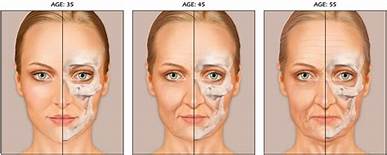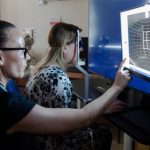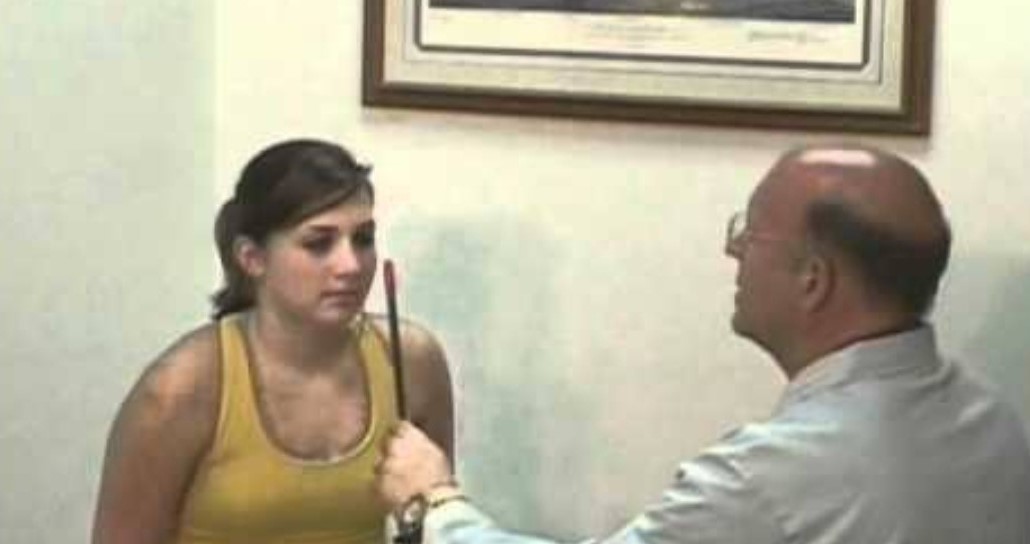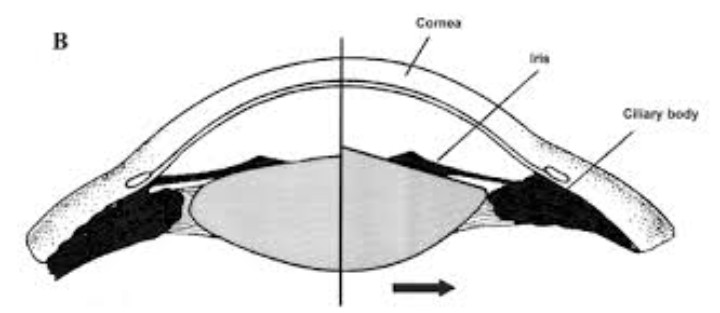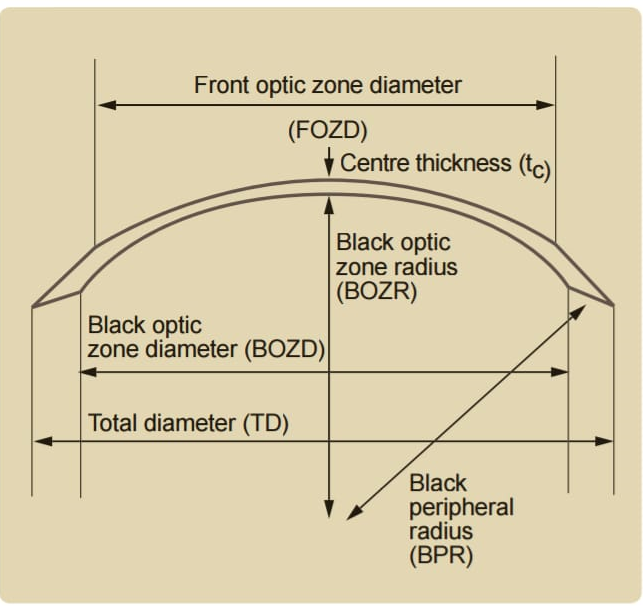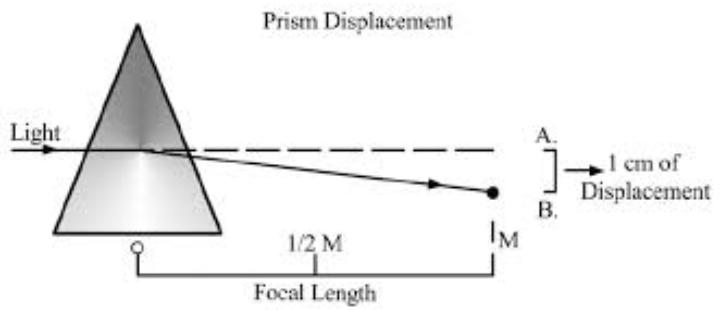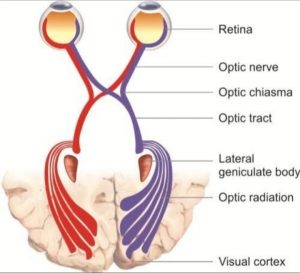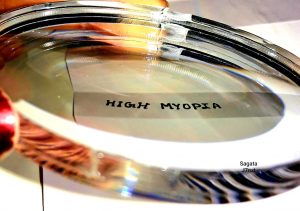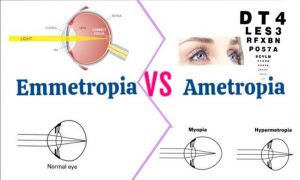What is accommodation?
Accommodation is defined as the ability to increase the dioptric power of lens by increasing its convexity to focus the diverging rays of light coming from a near object on the retina. This process is carried out by contraction of ciliary muscle thereby relaxation of zonules and hence increasing the curvature of lens.
Biomechanics of Near Accommodative Process
- An increase in the contraction force of ciliary muscle occurs.
- Further the ciliary muscle moves anteriorly inward.
- The ciliary ring advances approximately 0.5mm along with the ciliary muscle.
- The choroid and the posterior zonules stretched by approximately 0.5mm
- As the anterior zonular tension decreases the zonules relaxes.
- Crystalline lens changes occurs during accommodation:
- Equatorial diameter of the lens decreases by 0.4mm(from 10 to 9.6mm)
- The anterior lens pole moves back by 0.3mm.
- The central anterior radius of curvature changes from 11 to 5.5mm
- The posterior lens pole may move back by 0.15mm
- The central posterior radius of curvature decreases from 5.18 to 5.05mm
- The central lens thickness increases by 0.36 to 0.58mm
- Due to gravity the lens sinks by 0.3mm
Accommodation Reflex Pathway:
The afferent fibres extended from retina to parastriate cortex via optic nerve, optic chiasma, optic tract, lateral geniculate nucleus, optic radiations and striate cortex. From Parastriate cortex the impulses are relayed to the edinger westphal nucleus of both sides via the occipitomesencephalic tract and the pontine centre. From the edinger westphal nucleus the efferent impulses travel along the third nerve and reach these Sphincter pupillae an ciliary muscle after relaying in the accessory and ciliary ganglions.
Far Point: The maximum distance at which objects can be seen clearly without any accommodative effort is called farpoint or punctum remotum.
Near Point: The distance at which objects can be seen clearly with maximum effort of accommodation is called the nearpoint or punctum proximum.
The far point for emmetropic eye is at Infinity for a myopic eye is at finite distance and for a hypermetropic is behind the eye at a virtual position. The nearpoint varies with age.

Range and Amplitude of accommodation:
The distance between the punctum proximum man punctum remotum is called the range of accommodation.
The amplitude of accommodation is the difference between the dioptric power of the eye when it is focused for the farpoint and when it is focused for the nearpoint.
Age and accommodation: As age increases the amplitude of accommodation progressively decreases at a rate of approximately 0.30D per year.
Presbyopia:
Presbyopia is not a refractive error Instead it refers to slow normal naturally occurring age related irreversible insufficiency of accommodation due to reduced maximal accommodative amplitude leading to progressive loss of near vision. Mainly it occurs due to age related decrease in amplitude of accommodation along with increase in punctum proximum.
Causes:
- Age related changes in the lens-
- Decrease in elasticity of lens capsule.
- Gradual increase in size and sclerosis of lens substance.
- Age related ciliary muscle Paralysis
- Premature Presbyopia-
- Uncorrected hypermetropia
- premature sclerosis of the crystalline lens
- general debility causing personal weakness of ciliary muscle
- chronic simple glaucoma
Note: hypermetropia may cause early presbyopia and myopia may cause late presbyopia.
Clinical features:
- difficulty in near vision is the commonest complain to patients.
- Asthenopic symptoms along with fatty will also be there.
- Some patients can also complain of intermittent diplopia.
- Degradation of near visual acuity in near vision chart.
- The symptoms usually starts approximately in the age of 40 years.
- Symptoms are more marked in the evening under artificial light
- at the onset the difficulty can be overcome by holding the prints little away from the eyes
- As the age advances it becomes more and more difficult to carry on near works
- For the middle aged females the chief complaint is the inability to thread a needle

Treatment:
- Optical Correction Of Presbyopia:
The treatment of presbyopia is to provide the patient with additional power for near called presbyopic edition or near edition or reading addition to be added over the distance correction if there is any, So that his/her accommodation Is reinforced and is nearpoint brought within a useful near working distance say 33 centimetre or required.
To do this we must know-
- The near working distance of the patient
- the distant reflective condition of the patient
- the amplitude of accommodation of the patient
- it is important to know that half of the accommodation must be kept in reserve for to maintain the visual comfort of the patient
The correction of presbyopia is to help accommodation by prescribing as pharaoh convex classes for near. This makes the patient artificially myopic for distance have the distance vision will be blood through the near correction. This correction is done by keeping a connexion with different to commodity values for different ages of this donders clinical table of amplitude of accommodation is most useful.
Donder’s Clinical Table of amplitude of Accommodation
| Age | Amplitude of Accommodation | Punctum Proximum |
| 10yrs | +14.00D to +13.00D | 7cm |
| 15yrs | +12.00D | 8cm |
| 20yrs | +10.00D | 10cm |
| 25yrs | +8.00D | 12cm |
| 30yrs | +7.00D | 14cm |
| 35yrs | +5.50D | 18cm |
| 40yrs | +4.50D | 22cm |
| 45yrs | +3.50D | 28cm |
| 50yrs | +2.50D | 40cm |
| 55yrs | +1.50D | 65cm |
| 60yrs | +1.00D | 100cm |
| 65yrs | +0.50D | 200cm |
| 70yrs | +0.00D | Infinity |
| Age | Presbyopic add |
Rough estimate for presbyopic add at 33cm :
| 40yrs | +1.00dsph |
| 43yrs | +1.25dsph |
| 45yrs | +1.50dsph |
| 47yrs | +1.75dsph |
| 50yrs | +2.00dsph |
| 53yrs | +2.25dsph |
| 55yrs | +2.50dsph |
| 57yrs and above, aphakia, pseudophakia | +2.75dsph to +3.00dsph |
Method of Prescribing
- provide the distance correction if there is any
- then provide the near add over the distance correction as per the requirement and as per the working distance of the patient.
Different Modes of Glasses:
- Single vision glasses
- bifocal glasses
- trifocal glasses
- multiple colour varifocal glasses
2.Surgical treatment for presbyopia
- Monovision CK
- laser thermal keratoplasty
- Monovision hyperopic or myopic LASIK
- Presbyopic bifocal LASIK
- Presbyopic multifocal LASIK
- PRESBYOND laser blended vision



